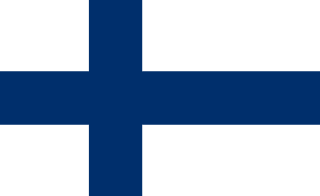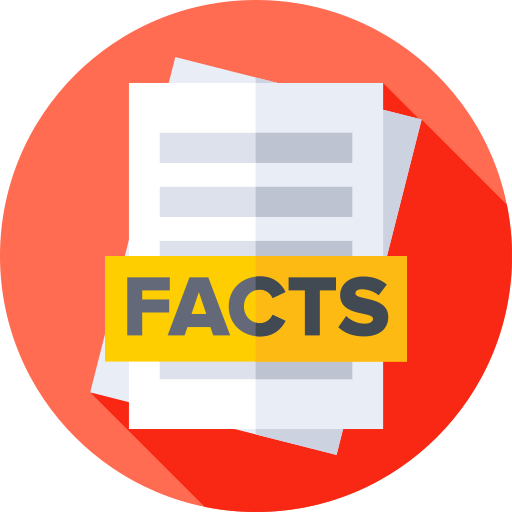Finland - Geography

Here, let us take a look at the Geography of Finland. Long boundary with Russia; Helsinki is northernmost national capital on European continent; population concentrated on small southwestern coastal plain. Mother's mean age at first birth is 29.5 years (2020 est.) (), whereas, the Maternal mortality ratio is 8 deaths/100,000 live births (2020 est.)
Geographical data of Finland
| Location | Northern Europe, bordering the Baltic Sea, Gulf of Bothnia, and Gulf of Finland, between Sweden and Russia |
|---|---|
| Geographic coordinates | 64 00 N, 26 00 E |
| Map references | Europe |
| Tarrain | mostly low, flat to rolling plains interspersed with lakes and low hills |
| Natural Resources | timber, iron ore, copper, lead, zinc, chromite, nickel, gold, silver, limestone |
| Natural Hazards | severe winters in the north |
| Irrigated Land | 80 sq km (2016) |
| Major rivers (by length in km) | |
| Major aquifers | |
| Land Boundaries | 2,563 km |
| Border Countries | Norway 709 km; Sweden 545 km; Russia 1,309 km |
| Coastline | 1,250 km |
| Climate | cold temperate; potentially subarctic but comparatively mild because of moderating influence of the North Atlantic Current, Baltic Sea, and more than 60,000 lakes |
| Area | |
| Total Area | |
| Land Area | 303,815 sq km |
| Water Area | 34,330 sq km |
| comparative Area | slightly more than two times the size of Georgia; slightly smaller than Montana |
| Maritime Claims | |
| Territorial sea | 12 nm (in the Gulf of Finland - 3 nm) |
| Contiguous zone | 24 nm |
| Continental shelf | 200 m depth or to the depth of exploitation |
| Exclusive fishing zone | 12 nm; extends to continental shelf boundary with Sweden, Estonia, and Russia |
| Elevations | |
| Highest point | Halti (alternatively Haltia, Haltitunturi, Haltiatunturi) 1,328 m |
| Lowest point | Baltic Sea 0 m |
| Mean elevation | 164 m |
| Land Use | |
| Agricultural land | 7.5% (2022 est.) |
| Agricultural land: arable land | arable land: 7.4% (2022 est.) |
| Agricultural land: permanent crops | permanent crops: 0% (2022 est.) |
| Agricultural land: permanent pasture | permanent pasture: 0.1% (2022 est.) |
| Forest | 73.7% (2022 est.) |
| Other | 18.8% (2022 est.) |
Population Distribution
The vast majority of people are found in the south; the northern interior areas remain sparsely populated
People and Society
In Finland, the different Ethnic groups are such that we have: Finnish, Swedish, Russian, Estonian, Romani, Sami
| Population | |
|---|---|
| Pop growth rate | 0.2% (2024 est.) |
| Birth rate | 10.2 births/1,000 population (2024 est.) |
| Death rate | 10.4 deaths/1,000 population (2024 est.) |
| Health expenditure | 10.2% of GDP (2021) |
| Physicians Density | |
| Hospital bed Density | 3.6 beds/1,000 population (2018) |
| Total fertility rate | 1.74 children born/woman (2024 est.) |
| Gross reproduction rate | 0.85 (2024 est.) |
| Contraceptive prevalence rate | 85.5% (2015) |
| Est married women (ages 15-49) | 57.2% (2023 est.) |
| Literacy | |
| Education expenditures | 5.9% of GDP (2020 est.) |
| Net Migration rate | 2.2 migrant(s)/1,000 population (2024 est.) |
| Nationality | Finnish | Finn(s) |
| Languages | |
| Religions | Lutheran 66.6%, Greek Orthodox 1.1%, other 1.7%, none 30.6% (2022 est.) |
| Age Structure | |
| 0-14 years | 16.2% (male 464,939/female 444,585) |
| 15-64 years | 60.3% (male 1,725,072/female 1,668,604) |
| 65 years and over | 23.5% (2024 est.) (male 583,645/female 739,569) |
| Dependency Ratios | |
| Total dependency ratio | 62.1 |
| Youth dependency ratio | 25 |
| Elderly dependency ratio | 37.1 |
| Potential support ratio | 2.7 (2021 est.) |
| Median Age | |
| Total | 43.3 years (2024 est.) |
| Male | 41.8 years |
| Female | 44.9 years |
| Urbanization | |
| Urban population | 85.8% of total population (2023) |
| Rate of urbanization | 0.42% annual rate of change (2020-25 est.) |
| Major urban areas (Pop) | 1.338 million HELSINKI (capital) (2023). |
| Sex Ratio | |
| At birth | 1.05 male(s)/female |
| 0-14 years | 1.05 male(s)/female |
| 15-64 years | 1.03 male(s)/female |
| 65 years and over | 0.79 male(s)/female |
| Total population | 0.97 male(s)/female (2024 est.) |
| Infant Motality | |
| Total | 2.1 deaths/1,000 live births (2024 est.) |
| Male | 2.3 deaths/1,000 live births |
| Female | 1.9 deaths/1,000 live births |
| Life Expectancy at birth | |
| Total population | 82.2 years (2024 est.) |
| Male | 79.3 years |
| Female | 85.2 years |
| Drinking Water Sources | |
| Improved: urban | urban: 100% of population |
| Improved: rural | rural: 100% of population |
| Improved: total | total: 100% of population |
| Unimproved: urban | urban: 0% of population |
| Unimproved: rural | rural: 0% of population |
| Unimproved: total | total: 0% of population (2020 est.) |
| Sanitation facility acess | |
| Improved: urban | urban: 100% of population |
| Improved: rural | rural: 100% of population |
| Improved: total | total: 100% of population |
| Unimproved: urban | urban: 0% of population |
| Unimproved: rural | rural: 0% of population |
| Unimproved: total | total: 0% of population (2020 est.) |
| Alcohol consumption per capita | |
| Total | 8.23 liters of pure alcohol (2019 est.) |
| Beer | 3.76 liters of pure alcohol (2019 est.) |
| Wine | 1.59 liters of pure alcohol (2019 est.) |
| Spirits | 1.96 liters of pure alcohol (2019 est.) |
| Other alcohols | 0.91 liters of pure alcohol (2019 est.) |
| Tobacco use | |
| Total | 21.6% (2020 est.) |
| Male | 26.9% (2020 est.) |
| Female | 16.3% (2020 est.) |
| Child marriage | |
| Women married by age 18 | 0.1% (2017 est.) |
Demographic profile
All Important Facts about Finland
Want to know more about Finland? Check all different factbooks for Finland below.









